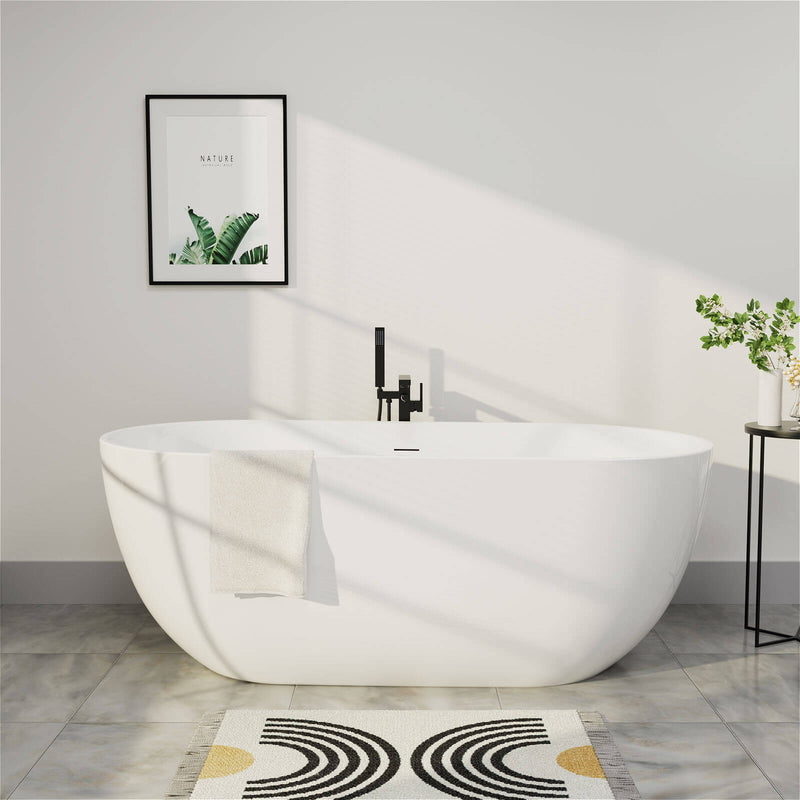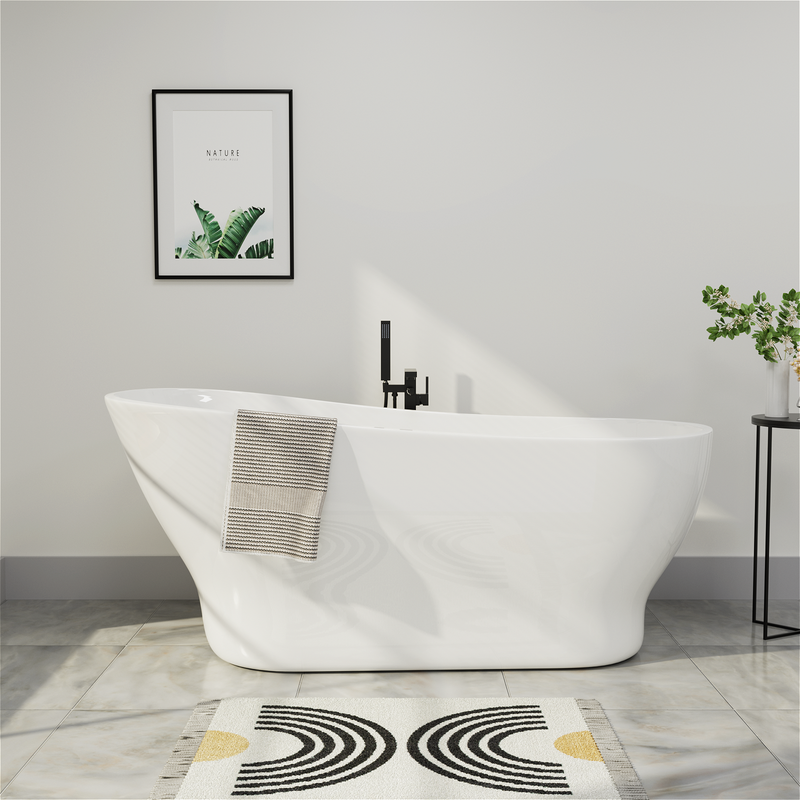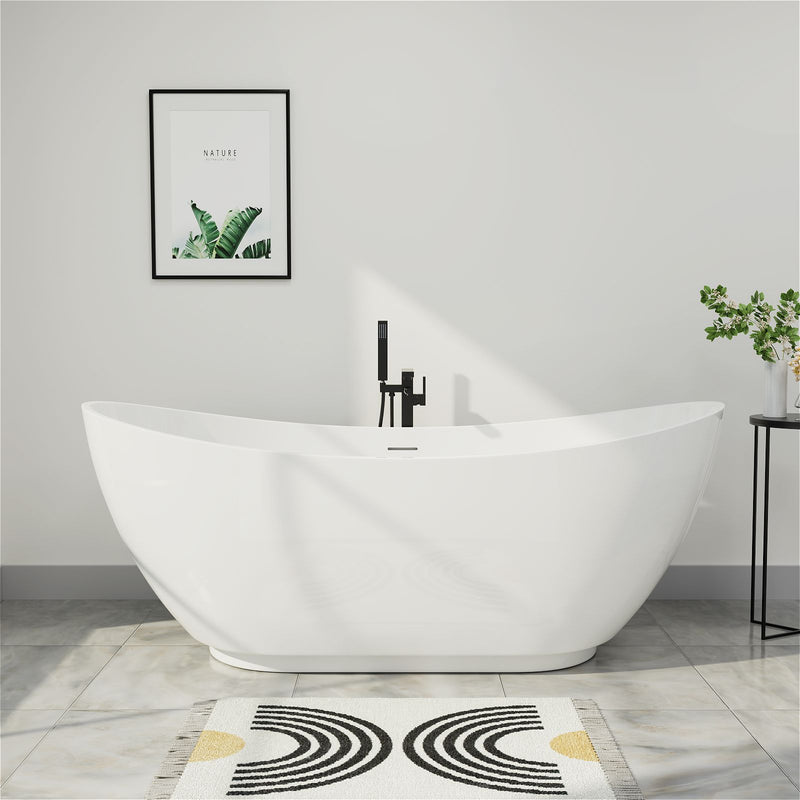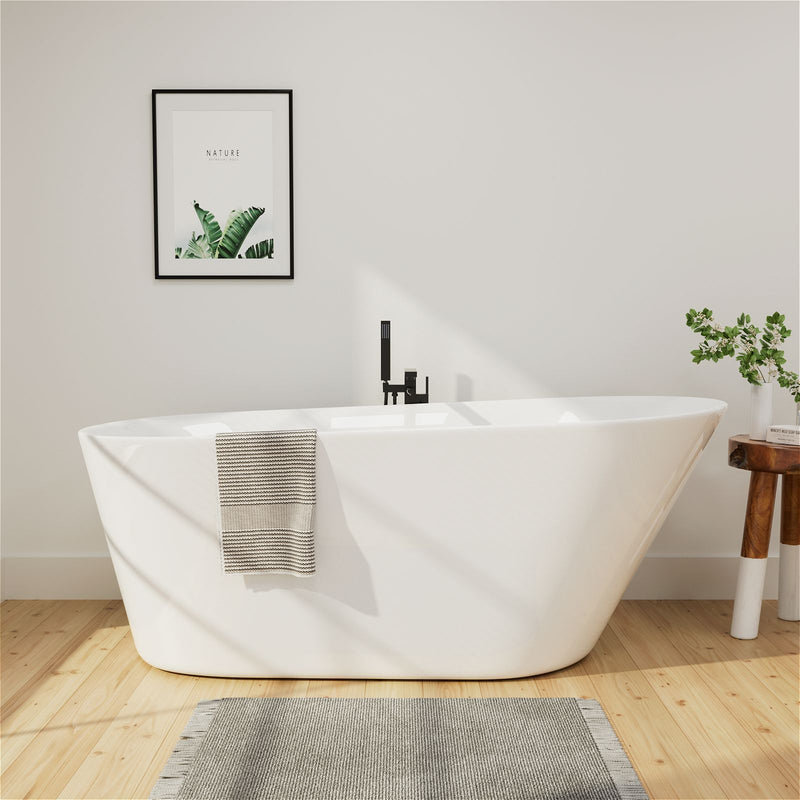How many gallons of water does a bathtub hold, and how heavy does it weigh when filled? This is an often overlooked but very important question. A gallon of water weighs about 8 pounds, so if your bathtub can hold about 100 gallons of water, the floor will be under about 800 pounds of pressure, not including your weight and the material of the bathtub itself. Therefore, it is very important to know the capacity of the bathtub.
In general, there is no set size for bathtubs. Although bathtubs come in a wide variety of sizes, there are a few standard or more popular sizes. A ten-minute shower uses roughly 25 gallons (94 liters) of water, compared to 35 to 70 gallons (132 to 264 liters) for a bath. As a result, taking a bath should be considered a particular pleasure in addition to the regular expenditures of heating, which could raise your power and water bills.
How Many Gallons of Water do Different Sized Bathtubs Hold?
First, the average bathtub has a capacity of roughly 70 gallons (264 liters). little bathtubs are typically better suited for shower enclosures or little children because they can only contain roughly 40 gallons (150 liters) of water. Larger bathtubs - including single-person bathtubs, which can readily carry considerably more water - can easily contain 100 - 110 gallons (378 - 410 liters).
Bathtub sizes can vary, but there are some typical capacities:
Small bathtubs: about 40 gallons
Standard bathtubs: 50-70 gallons
Large/two-person bathtubs: 80-170+ gallons
How Many Gallons of Water do Different Shaped Bathtubs Hold?
In addition to the widely varying exterior designs, the overall water capacity of each bathtub will also vary depending on its style and type. Generally, freestanding bathtubs are larger and hold more water, alcove bathtubs are smaller and hold less water, and built-in bathtubs are somewhere in between freestanding and alcove bathtubs. Two-person and corner bathtubs are usually relatively large and offer more water capacity.
The capacity of the water heater and the extra capacity of the bathtub should also be taken into account. The water heaters seen in most households have a 30-36 gallon capacity. A larger water heater with a 40 - 60 gallon capacity might be necessary if you live in a house with four or more people. This is significant because the water heater must have a higher capacity to maintain a constant supply of hot water for an extended, soothing shower or bath.
Often, factors such as the shape of the bathtub and whether it is a tub/shower combo will also affect capacity. Here are common bathtub styles and their average capacities:
Alcove bathtubs: 50-60 gallons
Clawfoot bathtubs: 40-70 gallons
Corner bathtubs: 90-100 gallons
Freestanding bathtubs: 60-80 gallons
Bathtub/shower combo: 60-80 gallons
Two-person bathtubs: 100-170+ gallons
Gallons of Various Bathtubs
The average bathtub capacity ranges from 50 to 70 gallons, and if the bathtub is designed for a small corner area, the capacity will be closer to the lower end of that range, usually around 40 gallons. Clawfoot tubs typically hold 40 to 70 gallons of water, but modern freestanding tubs can hold 60 to 80 gallons. Tub-shower combos can hold more, usually 60 to 80 gallons, and even more on larger models.
Keep in mind the amount of water that drains once you enter the tub, so you don't need to fill the tub to the level of the overflow drain cover when you take a shower.
Factors Affecting Tub Capacity
Now that you know how much water different types of tubs can hold, let's explore other factors that affect their capacity.
Tub Size
The most important factor in a tub's capacity is its interior dimensions. While the tub's packaging may list its exterior dimensions, the interior dimensions affect its capacity. Specifically, you can estimate the tub's capacity based on its interior length, width, and depth. However, it's not as simple as just measuring three dimensions. The tub itself also has a certain slope to facilitate drainage. Therefore, this size also affects the tub's capacity.
Tub Shape
Another factor that affects a tub's capacity is its interior shape. Generally, the curves and angles of a tub will reduce its capacity. So even though a round tub takes up a lot of space overall, it may still hold less than a smaller rectangular tub. Likewise, straight walls can increase capacity compared to sloping tub walls.
Overflow Level
The location of the overflow hole also affects the tub's capacity. This hole directs water to ensure that the tub doesn't overflow. Therefore, the tub can only hold water below this hole.
Choosing a Tub or Shower
When deciding whether to go with a tub or shower, consider your priorities and needs:
Water conservation: Showers are generally more water-efficient, with a typical 10-minute shower using no more than 25 gallons of water. A bath uses an average of 35-50 gallons of water. If water conservation is your top priority, try to opt for quick showers instead of daily baths.
Limited space: Consider alcove tubs and claw-foot tubs that fit into smaller spaces. You can even find some space-saving corner tub designs that can be cleverly tucked into sloping areas. Freestanding tubs and large soaking tubs take up more space.
Seeking therapeutic benefits: Because the warm water is so calming, baths can help relieve a sore nose, arthritis, and aching muscles. Take a bath only a few times a week to reap the health benefits and preserve water.
Bathing your child: To conserve water and labor, pick a bathtub that is kid-friendly. To make bath time more entertaining and engaging, think about include games and bath toys.
Want the best of both worlds: Choose a shower and bathtub combination. This allows you to combine the two alternatives into a single bathroom fixture. However, keep in mind that filling a bathtub requires more water than just taking a shower.
Comparing Water Usage Between Bathtubs and Showers
Comparing water usage can be useful when choosing between a shower and a bathtub.
Average bath water usage: 35-50 gallons
10-minute shower: 25 gallons
So in most cases, a bath does use more water than a quick shower. However, a bath can also provide additional health and therapeutic benefits that a shower can't.
According to the U.S. Environmental Protection Agency, a normal shower uses 10 to 25 gallons of water, for a more thorough comparison. Therefore, even at the higher end of that estimate, a shower lasting 10 to 25 minutes often consumes less water than a bath that uses 35 to 50 gallons. The sole exception is when bathing a toddler, in which case the tub simply needs a little water.
Overall, showers tend to be more water efficient, but baths have therapeutic benefits:
Improves heart health - Warm water can improve circulation and lower blood pressure.
Easy breathing - The steam from a bath can help open up your airways, making breathing easier, and is especially helpful for relieving nasal congestion.
Relaxes muscles - The buoyancy of the water can take pressure off your joints and relax your body.
Reduces stress - A soothing soak can lower cortisol and relax the mind.
Improves sleep - A bath before bed can help regulate your body temperature and improve sleep quality.
Balances hormones - The warmth and massage effect may help normalize hormone levels.
Cleanses and moisturizes the skin - Baths can cleanse and moisturize the skin, hair, and eyes.
To save water and have the best of both worlds, take a fast 5- to 10-minute shower every day and only take a bath two to three times a week.
All in all, standard bathtubs hold between 40-70 gallons, with many in the 50-60 gallon range. Larger tubs like corner tubs, freestanding tubs, and tub/shower combo can hold upwards of 80-110 gallons of water. While a bathtub uses more water than a regular shower, it also has therapeutic benefits like relaxing muscles and soothing joints.
Think about your priorities while selecting a shower or bathtub. Would you choose a relaxing soak or water conservation? Which bathtub is appropriate for the size of your bathroom? Combining a tub and shower gives you versatility in a one item. If your room is limited, go for a smaller alcove tub; if you want a spa-like soak, go for a larger freestanding tub.
Whichever option you select, keep water conservation in mind. Don't take more than five to ten minutes at a time. You can also lower the amount of water used in your home by purchasing a water-efficient showerhead. You may take a nice shower or a soothing bath without consuming too much water if you plan ahead.





